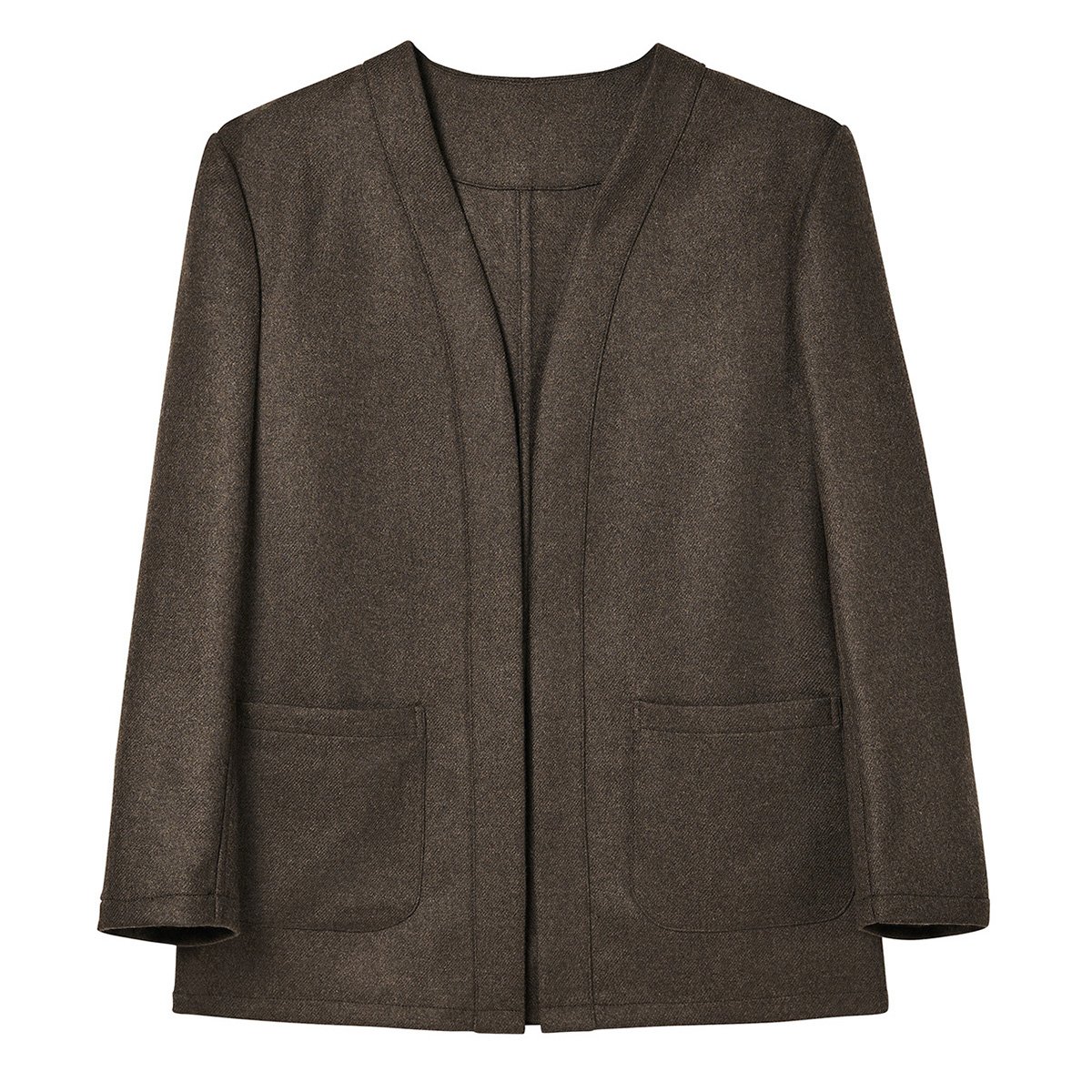Introducing the Yukata Series
More than five years in the making, the Yukata series embodies the House of Tengri spirit, combining rarity, craftsmanship, heritage and versatile functionality.
This limited series of Yukata jackets is exquisitely crafted by Gownsmith, the masters of luxury loungewear, in a choice of some of the world’s rarest cloths created by Tengri.
Nancy Johnston, House of Tengri Founder and Creative Director, had long been on a quest for the ultimate multifunctional gown – a piece with the wearability of a robe or coat and unisex styling. Taking inspiration from the functionality of gowns and robes from a range of Asian influences, Nancy translated the design cues of the Japanese Haori coat into an essential asset for any modern luxury wardrobe.
Believed to have originated in the 16th-century Sengoku period, the Haori was once worn by warriors adorning their battle armour to protect against cold weather. Later, it became a unisex piece, worn by women over the kimono as style armoury and for warmth.
Nancy’s affinity for masculine tailoring, the box-cut silhouette of the Haori coat and its representation of inclusivity, equality and diversity is embodied in the Yukata. Exquisitely soft and immeasurably wearable, the Yukata is steeped in gown sensibilities – ensuring the comfort and feeling of home wherever it’s worn.
It’s also a manifestation of sustainability, made from Tengri Noble Fabrics that support the growth of socio-economically vibrant and sustainable indigenous highland communities, animals and land, crafted to work with every body type and made to last for many years.
Hand-tailored by Gownsmith’s team of Savile Row-trained makers, the Yukata employs techniques that have defined bespoke tailoring for generations. (Right down to the label, discreetly tucked away in a pocket, in keeping with bespoke tailoring.) The fabrics include ‘Rare Earth’ and ‘Cocoa’ hopsack, ‘Camel’ flannel and a chic herringbone in a blend of Khangai yak with British Bluefaced Leicester. Each piece is lined in cool linen with blue piping to honour the roots of its journey and ‘Tengri’, Mongolia’s sky god.
The Yukata Collection at a glance
Yukata I
Rare Earth Hopsack
Made from a one-off batch of the first combing of Khangai yak fibres sent to us by indigenous herders – super-soft fibres featuring earthy browns and the rarest silver. The extreme rarity of this cloth means that the Yukata I is handmade in a limited edition of only five.
Yukata II
Cocoa Hopsack
Made from a gorgeous double-faced twill 550gsm cloth that’s undyed, in the natural cocoa colour of the Khangai yak. The clean finish of this cloth is achieved through raising, napping, cropping and pressing the fabric, which improves the natural water-repellent properties of its fibres. Yukata II is handmade in a limited edition of only 10.
Yukata III
Camel Flannel
Made with rare baby Khangai Camel fibres in a flannel structured cloth, our lightest-weight cloth with a subtle surface and soft drape. Once woven, the cloth is raised with teasels to form a light nap, which is then levelled. Yukata III is handmade in a limited edition of only 10.
Yukata IV
Khangai Blue Herringbone
Our first ever 50/50 blend of rare British Bluefaced Leicester sheep’s wool and Tengri Khangai Yak Noble Fibres, using undyed natural fibres woven in a unique herringbone pattern. Yukata IV is handmade in a limited edition of only 10.










